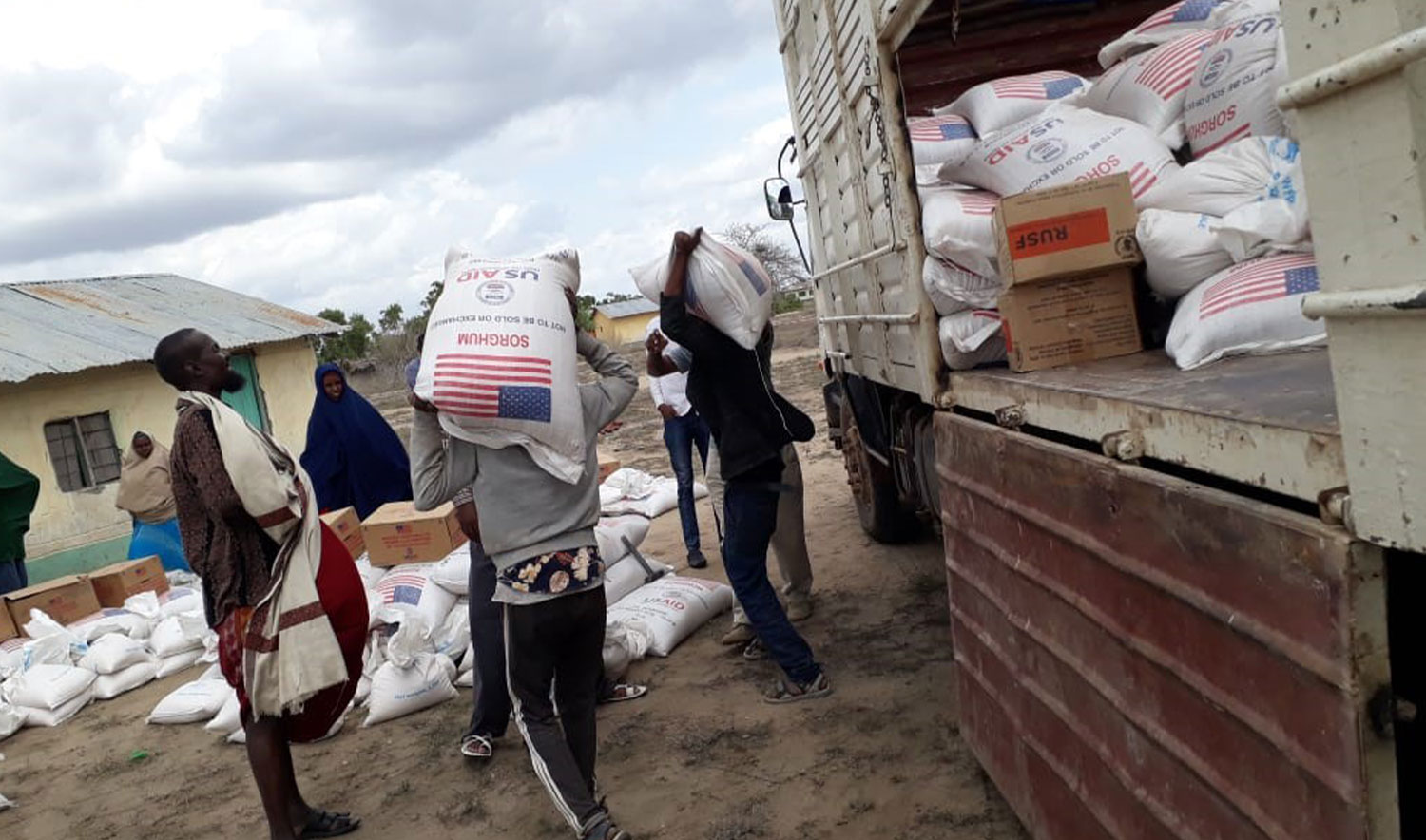Sustainable Food Systems Programme – Food Distribution Component
Location of implementation: Garissa County Period of implementation
Donor: Period of Implementation: 2019 – Current

Location of implementation: Garissa County Period of implementation
Donor: Period of Implementation: 2019 – Current

To ensure institutionalization of community resilience in the sub-national government’s plans and strategies, the county government of Garissa, through the Ministry of XXXX is leading the resilience programming component, while on its part, RRDO has been leading the food distribution component targeted at XXX HHs on a monthly basis since the project inception in March 2019.
In addition to collaborating with the county government in order to build their capacity on the resilience component, WFP is also responsible for mobilizing and delivering relief food to the National Cereals and Produce Board (NCPB) warehouses in Garissa where RRDO takes over the responsibilities of managing the safety of the food and its distribution to the targeted Households (HHs). Two of the main functions of RRDO in the implementation of this project include:
Warehousing and logistical coordination: – this is one of the key components of the SFSP project. Upon delivery of the consignment by the WFP to the secondary warehouse in Garissa (from the port of Mombasa), RRDO takes over the responsibility from that point onwards. RRDO offloads the consignment and stores it in the NCPB warehouses in Garissa town, and manages aspects of warehousing including cleaning and fumigation of the facilities, security management for safe keeping of the food stuff, writing waybills, updating bin cards, weekly stock taking and reporting, developing monthly movement reports and conducting physical inventory at the end of the month for accountability purposes.
Identification of vulnerable households and distribution of relief food: – – as the cooperating partner for the project, RRDO is also responsible for identification of vulnerable House Holds (HHs), as well as management of distribution of food to the target families. To ensure community participation, as well as transparency and accountability of the process, RRDO starts by supporting communities to establish, and build capacity of village level Project Implementation Committees (PIC). These committees constitute of elected representatives whose work is to help with identification of the needy HHs, as well as organize community members during the take part during the distribution of relief food.
Through a rigorous process that involves consultations with WFP, the county government of Garissa, and the National Drought Management Authority (NDMA), RRDO maps out all the vulnerable HHs, including their respective sizes in order to develop a food rationing criteria. RRDO then organizes for secondary transportation of the food aid from the main warehouse in Garissa to the Final Distribution Points (FDPs). In close collaboration with the Project Implementation Committee (PIC), RRDO then coordinates the distribution of food to the targeted beneficiaries across all the eight wards in Garissa county including Masalani, Ijara, Nanighi, Maalmin, Benane, Iftin, Danyere, Sankuri. In order to promote accountability and feedback loop, RRDO has also been responsible for supporting the establishment of complaints procedure, which involves working with complaints committee in order to collect and address any form of complaints from the targeted communities. Through this project, RRDO has distributed food to 11,627 HHs, averaging at 69,762 beneficiaries in total.
To mitigate the potential negative impacts of COVID-19 pandemic, RRDO has sought to ensure that as much as possible, Ministry of Health’s protocol on the management of the spread of the virus as closely followed across all the stages of food distribution across the entire process.
Adding {{itemName}} to cart
Added {{itemName}} to cart